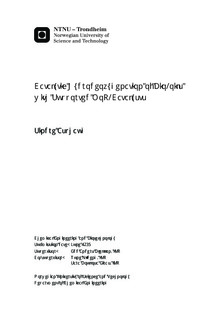Catalytic Hydrodeoxygenation of Bio-oils with Supported MoP-Catalysts
Master thesis
Permanent lenke
http://hdl.handle.net/11250/248420Utgivelsesdato
2013Metadata
Vis full innførselSamlinger
Sammendrag
The goal of this thesis was to test the MoP catalysts which were made during autumn 2012, in a HDO reaction of phenol to benzene at a HDO rig. The catalysts were supported by Al2O3, SiO2, TiO2 and ZrO2, and they were prepared by impregnation, followed by calcination, reduction and passivation. New samples of the 2 catalysts which showed the highest activity, MoP/Al2O3 and MoP/TiO2, were prepared. They were characterized with N2-adsorption, chemisorption, TPR and XRD, and they were further tested at the HDO rig with varying temperature, flow rate, pressure and H2/oil ratio.The results from the N2-adsorption showed that the surface area of the supports decreased during impregnation, and increased slightly during reduction. The TPR analyses confirmed the 3 stage reduction of MoO3 to MoP. The low calculated particle size from the chemisorption was confirmed by the XRD analyses, where no peaks indicating formation of MoP was found.The activity of the catalysts increased in the order: MoP/SiO2 < MoP/ZrO2 < MoP/Al2O3 < MoP/TiO2, which was the opposite trend of the metal dispersion. The activity of the MoP/TiO2 catalyst decreased over time due to catalyst deactivation, and the activity varied not significantly with different pressure and H2/oil ratio. The high activation energy indicated that the rate determining step is the surface reaction. However, the varying results from the repeatability measurement of the MoP/TiO2 catalyst showed that there are large uncertainties in the results. Small variations in the stirring and drying rate during catalyst preparation changed the catalyst properties significantly. Replacement of the thermocouple and heating tape may also have influenced the results. More research is therefore needed to verify the results.
